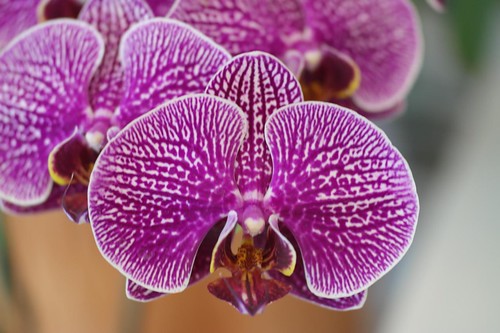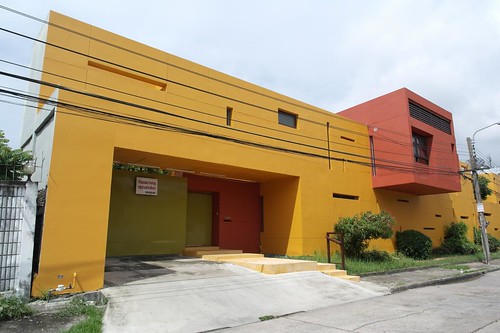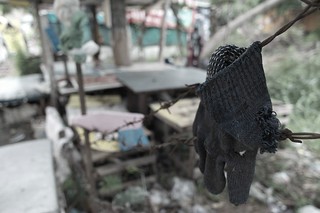But hey, its 2013, we have smartphones now and maps. So, I did a bit of a comparison between the two leading maps: Google maps and Openstreetmap (Forget Bing, please, and don't even think about Apple maps)
When you use maps, you need orientation. To get orientation, you need to know where you are. Your phone may use its GPS to do that. But maybe you want to see the bigger picture. Google Maps is quite good in this:
Even when you zoom out you get some useful information and you will see some street names, at least the important ones. Not all of them are in English, and I don't know why Google is still mixing the English and the Thai interface.
So I did a screenshot of the same area from the Openstreetmap-Website.
 It looks very different. It seems that OSM has a strong focus on the detail. The more you zoom in, the more information you get, and a lot of venues are named in English. In particular in the downtown tourist area nearly every noodle soup cart is mention. But when you zoom out, you are lost. Just some coloured lines, that's it. The more you go to the East, the less information it has. My area, Samut Prakan, is poorly covered - and with a lot of useless information as well.
It looks very different. It seems that OSM has a strong focus on the detail. The more you zoom in, the more information you get, and a lot of venues are named in English. In particular in the downtown tourist area nearly every noodle soup cart is mention. But when you zoom out, you are lost. Just some coloured lines, that's it. The more you go to the East, the less information it has. My area, Samut Prakan, is poorly covered - and with a lot of useless information as well.So I checked for another problem I recently ran into: Public places. There is a park with a lake next to Queen Sirikit Convention Center. I took some pictures there, and when I was back home and editing and tagging them, I wondered what the name of the park was. Open Streetmap gives me a Thai name (for some reason the font isn't increasing, so it is very difficult to read). But at least I have a name. (Note: When I tried to edit the map top add the English name, everything then was in English. already. No idea why it din't show up on the map)
Google has no name at all. There is a location name of an Bootcamp event, no idea why this is on the map, but that's pretty much it.
A friend then told me it's the Benjakiti Park (a nice running place in the afternoon, you can rent bikes there as well, as mentioned in the OSM)
So this is the other problem with both maps. You can contribute to Openstreetmaps by adding a newly discovered place (certain apps for Android or iOS makes it quite easy). But for some reason, people outside the downtown area don't do it (I tried it in Laos, but my places never showed up, so I gave up after a while. That shouldn't dis-encourage you, maybe I was to stupid to use the app.)
Google has an amazing tool that provided a lot of information for the maps: mapmaker. There you can add places, even streets. It goes through an approval process and will later end up in the google maps update. Only problem: For some reason it is not available in Thailand.
So, be careful if you ant to rely on these maps. They can help you a lot, but sometimes you can get lost in the City of Angles.

















